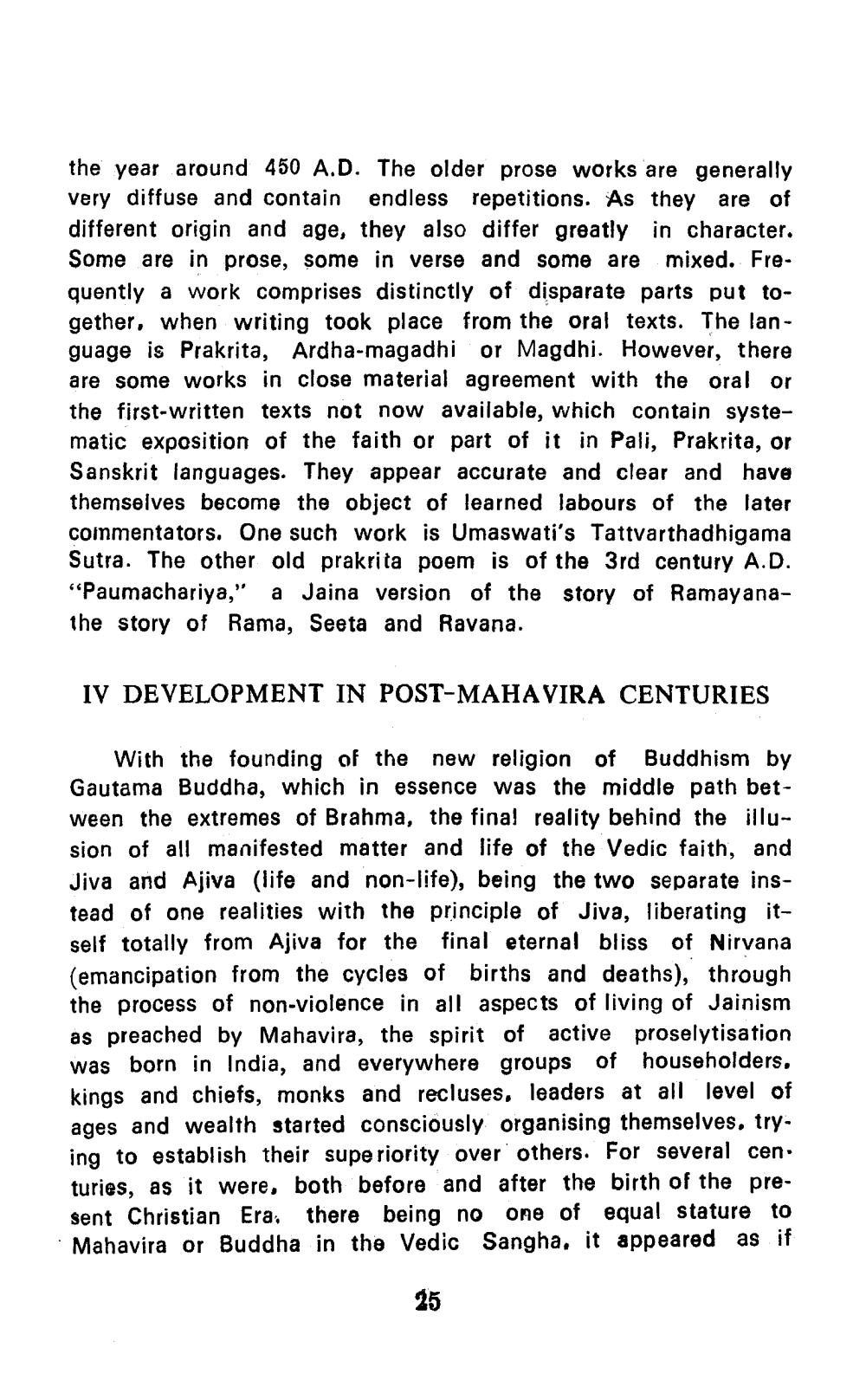________________
the year around 450 A.D. The older prose works are generally very diffuse and contain endless repetitions. As they are of different origin and age, they also differ greatly in character. Some are in prose, some in verse and some are mixed. Frequently a work comprises distinctly of disparate parts put together, when writing took place from the oral texts. The language is Prakrita Ardha-magadhi or Magdhi. However, there are some works in close material agreement with the oral or the first-written texts not now available, which contain systematic exposition of the faith or part of it in Pali, Prakrita, or Sanskrit languages. They appear accurate and clear and have themselves become the object of learned labours of the later coinmentators. One such work is Umaswati's Tattvarthadhigama Sutra. The other old prakrita poem is of the 3rd century A.D. “Paumachariya," a Jaina version of the story of Ramayanathe story of Rama, Seeta and Ravana.
IV DEVELOPMENT IN POST-MAHAVIRA CENTURIES
With the founding of the new religion of Buddhism by Gautama Buddha, which in essence was the middle path between the extremes of Brahma, the final reality behind the illusion of all manifested matter and life of the Vedic faith, and Jiva and Ajiva (life and non-life), being the two separate instead of one realities with the principle of Jiva, liberating itself totally from Ajiva for the final eternal bliss of Nirvana (emancipation from the cycles of births and deaths), through the process of non-violence in all aspects of living of Jainism as preached by Mahavira, the spirit of active proselytisation was born in India, and everywhere groups of householders, kings and chiefs, monks and recluses, leaders at all level of ages and wealth started consciously organising themselves, trying to establish their superiority over others. For several cen. turies, as it were, both before and after the birth of the present Christian Era, there being no one of equal stature to · Mahavira or Buddha in the Vedic Sangha, it appeared as if
25




